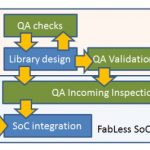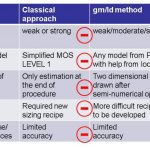In the EDA world we use hyphens quite often to describe our technical approaches, like: DFM-aware, Power-aware, Variation-aware. I just read a white papertoday on the topic of Quality-Aware IP Design Flows, written by Fractal Technologies. If your group creates IP or re-uses IP, then there’s always the question about … Read More
Author: Daniel Payne
Two New ESL Tools for Power and Thermal at DAC
Gary Smith published a list of what to see at DAC, and I noticed that he listed DOCEA Power in a category of ESL Thermal. I’ll be meeting the DOCEA engineers on Wednesday at DAC to learn more about their two newest ESL products:
- Thermal Profiler
- Power Intelligence
In general DOCEA Power tools allow you to manage power and thermal… Read More
Different Approaches to System Level Power Modeling and Analysis for Early Design Phases
At DATEthis year in Dresden, Bernhard Fischer from Siemens CT(Corporate Technology) has presented an interesting summary of the various techniques used for power modeling and analysis at the architectural level. He went through the pros and cons of using spreadsheets, timed virtual platforms annotated with power numbers … Read More
Virtual Prototype Collaboration
The concept and use of virtual prototypes continues to grow each year in electronics design, mostly because it really does shorten product development cycles by allowing software engineers to start early debug and fix errors prior to production. Other useful benefits to virtual prototyping include software optimization, … Read More
Full-Custom Low Power Design Methodology
Digital designers have used logic optimization and logic synthesis for decades as a means to produce more optimal designs with EDA tools. On the analog and transistor-level side of design the efforts to automatically optimize for speed or power have generally been limited to circuits with only a handful of transistors. These … Read More
A Brief History of the Apple MacBook Pro
I’m typing this blog today with my trusty Apple MacBook Pro – a 17″ laptop with matte display and 16GB of RAM, but don’t stereotype me as an Apple fanboy because I also own the fantastic Samsung Galaxy Note II phone (aka phablet). Some industry pundits would have us believe that desktops and laptops are going… Read More
Analog and Full Chip Simulation at Micron
IDM companies like Micronuse SPICE circuit simulators during the design phase in order to predict timing, currents and power on their custom IC chip designs at the transistor level. A senior memory design engineer at Micron named Raed Sabbahtalked today at a webinarabout how the embedded solutions group uses the FineSimcircuit… Read More
IC Power Noise Reliability for FinFET Designs
Reliability for ICs is a big deal because the last thing that you want to do is ship a new part only to find out later in the field that there are failures not being caught by testing. I’ve already had two consumer products fail this year because of probable reliability issues: My MacBook Pro with 16GB of RAM started rebooting caused… Read More
RTL Designers Can Win a GoPro Camera at DAC
DACis just 33 days away and who wouldn’t want a cool GoPro camerato play with? Your manager will certainly want you to first check out what’s new at DAC if your job involves getting to RTL signoff on time and within budget. The creative folks at Atrenta have figured out how to attract us with the offer of winning a GoPro camera,… Read More
IC/Package/Board – Power, Noise and Reliability from ANSYS (Apache DA) at DAC
ANSYS acquired Apache Design Automation back in June 2011and three years later the name “Apache” is being subdued in favor of using just ANSYS. One thing that I noticed right away was a DACfocus on having actual ANSYS customers talk about their hands-on experience using the EDA tools. The following seven customers… Read More













AI RTL Generation versus AI RTL Verification